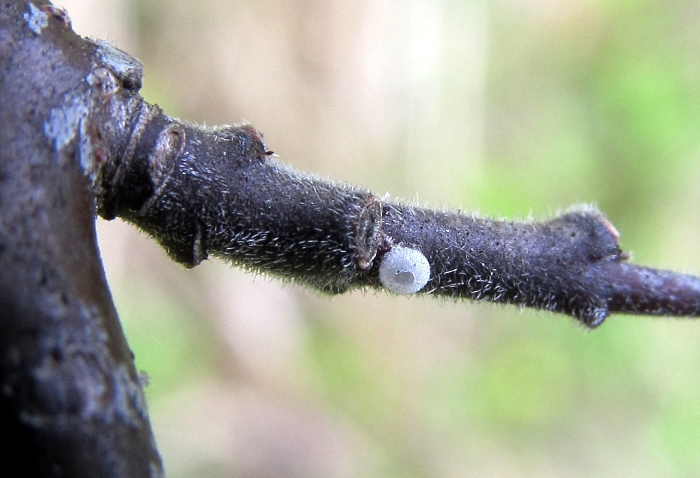
Switzerland, July 2018

Val d'Aran, July 2007

Val d'Aran, July 2007

Switzerland, June 2005

Switzerland, June 2005

Portugal, June 1992

A cluster of hatched eggs, Switzerland, May 2014

Hatched egg, Switzerland, May 2014

Unhatched egg, Switzerland, May 2014

Parasitised egg, Switzerland, May 2014

Distribution
I first found this
butterfly in June
1991 in Portugal, flying in the
Algarve and up the west coast. Then, I was travelling without a camera
and didn't get photos of it until the next year. Since then I have seen
it regularly, but usually singly, in the Pyrenees and the Alps. It
seems to be generally widespread in central and southern Europe but
nowhere really common - or at least not conspicuous. In August 2018 I
saw a single individual at a site in Switzerland I visit very
frequently every year but that was the first time I had ever come
across a blue spot hairstreak there.
Given a good view of a fresh individual, identification is very easy. There is a conspicuous patch of blue scales in the anal angle of the hindwing and the hairstreak itself is broad and bold - as if it has been applied with a paintbrush rather than an inkpen. Sloe hairstreaks do often have a patch of blue in the same place but it is less extensive and does not completely occupy the submarginal lunule.
Males have a habit of defending territories from perches atop bushes - often thorn bushes, but not necessarily their hostplant, buckthorn. Indeed, this is a butterfly of bushy, scrubby terrain rather than woodland like many Satyrium species. Females lay their eggs on twigs of young buckthorn bushes, sometimes in forks, like brown hairstreaks, but equally on straight parts of the twigs. It is this stage that hibernates, the caterpillars emerging to complete their development in the spring. Adult butterflies emerge in June and can be found into August.
Given a good view of a fresh individual, identification is very easy. There is a conspicuous patch of blue scales in the anal angle of the hindwing and the hairstreak itself is broad and bold - as if it has been applied with a paintbrush rather than an inkpen. Sloe hairstreaks do often have a patch of blue in the same place but it is less extensive and does not completely occupy the submarginal lunule.
Males have a habit of defending territories from perches atop bushes - often thorn bushes, but not necessarily their hostplant, buckthorn. Indeed, this is a butterfly of bushy, scrubby terrain rather than woodland like many Satyrium species. Females lay their eggs on twigs of young buckthorn bushes, sometimes in forks, like brown hairstreaks, but equally on straight parts of the twigs. It is this stage that hibernates, the caterpillars emerging to complete their development in the spring. Adult butterflies emerge in June and can be found into August.